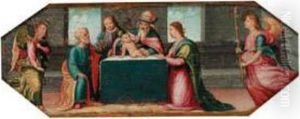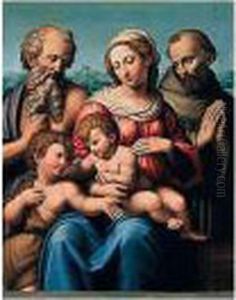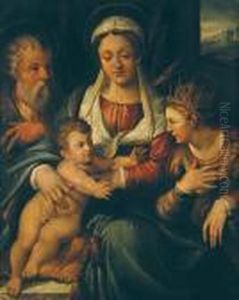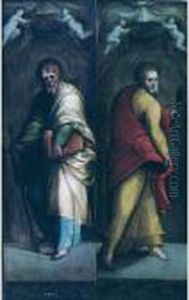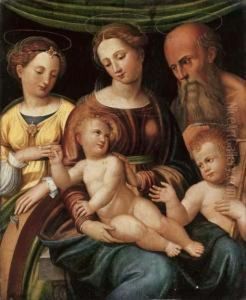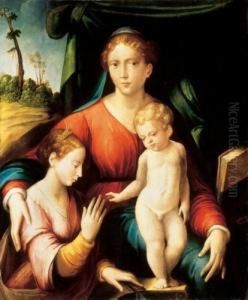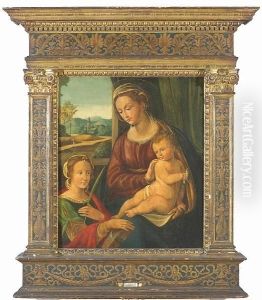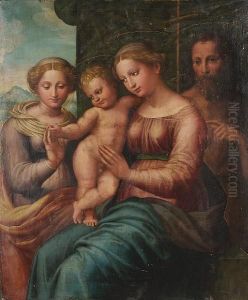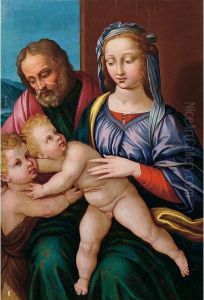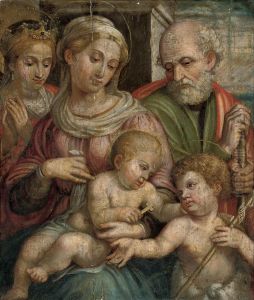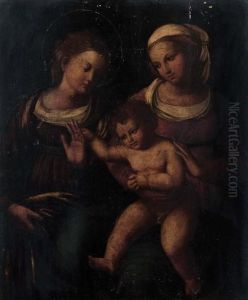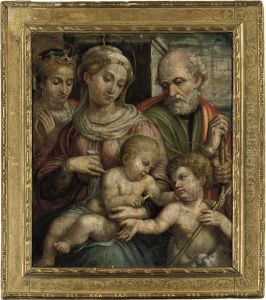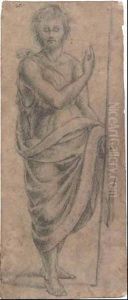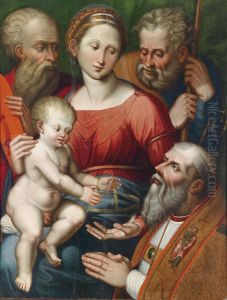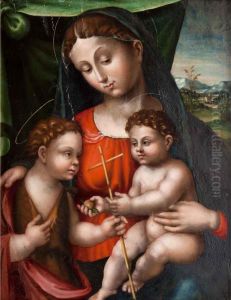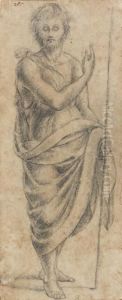Innocenzo Da Imola Paintings
Innocenzo Francucci, better known as Innocenzo da Imola, was a notable Italian painter of the Renaissance period. Born in 1494 in Imola, a town in the Emilia-Romagna region of Italy, Innocenzo was deeply influenced by the works of other prominent artists of his time, particularly Raphael. His style is often characterized by the harmony, clarity, and grace derived from the High Renaissance artistic principles, though he also absorbed influences from other masters, contributing to his distinctive style.
Innocenzo initially trained under Francesco Francia in Bologna, which laid the foundation of his artistic education. This early period in Bologna was crucial for shaping his approach to painting, deeply embedding the principles of the Bolognese school into his work. Despite the strong influence of his teacher, Innocenzo's work soon began to reflect a broader range of influences as he developed his own artistic identity.
Throughout his career, Innocenzo da Imola was known to travel between Imola, Bologna, and Florence. His time in Florence was particularly significant, as it allowed him to study the works of Raphael firsthand. The influence of Raphael is evident in many of Innocenzo's paintings, where the clarity of composition, serene figures, and balanced use of color reflect the High Renaissance ideals. Innocenzo's works, including altarpieces, frescoes, and portraits, showcase his ability to blend his influences into a coherent and appealing style.
Despite his talent and the quality of his work, Innocenzo da Imola has not achieved the same level of recognition as some of his contemporaries. His career was somewhat overshadowed by the more dominant figures of the time. However, his contributions to the Italian Renaissance, particularly in terms of spreading Renaissance ideals beyond the major centers of Florence and Rome, remain significant. His works can be found in various Italian churches and collections, illustrating his role in the dissemination of Renaissance art and aesthetics.
Innocenzo da Imola's exact date of death is uncertain, but it is believed to be around 1549. His legacy, though not as widely celebrated as that of some of his peers, continues to be appreciated for its embodiment of Renaissance values and its influence on the development of late Renaissance art in the regions of Emilia-Romagna and beyond.
